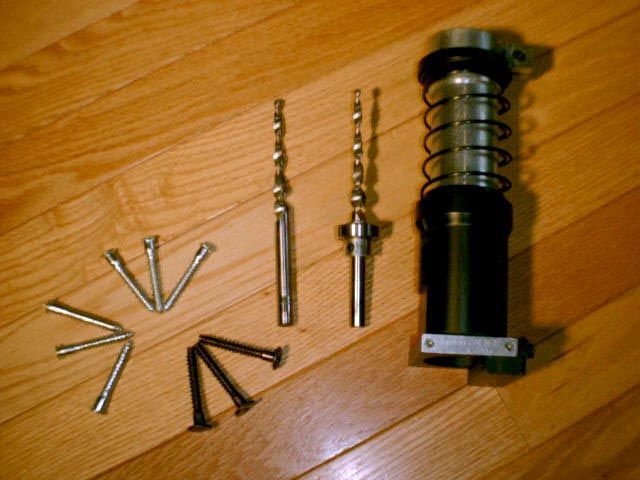Question
What is the real scoop on the Zentrix system? Is it really an option until one gets a construction boring machine, or is it so slow and a pain to use that it's not worth it?
Forum Responses
(Cabinetmaking Forum)
From contributor M:
Good questions… My reply is based purely on my own experiences. I do not wish to get sucked into a long drawn out debate here, so everyone please understand that there are many ways to assemble a cabinet based on your own preferences.
I first heard about confirmat connectors in Jim Tolpin's books on cabinetmaking, "Working at Woodworking" and "Building Traditional Kitchen Cabinets." Like a lot of cabinetmakers, I like to experiment with many different techniques until I find one that fits my style of cabinets, from design all the way through installation. Not only does this give me a feel for what the method is like, but it also gives me some experience that may be used at a later time for a different job.
Confirmats are a wonderful type of connector. They make an incredibly strong butt joint in particleboard and plywood. The joint can be disassembled and reassembled as necessary, making the process of moving large cabinets, knocked down, by yourself, a breeze. There are two types of connectors that I am aware of - the standard flat head, which is great for frameless cabinet construction, and a barrel head, which is similar to a pan head screw. The barrel head can be left exposed, if necessary, because it does not look bad, but I found with face frame cabinets, when the frame extends beyond the sides, it makes even a stronger connection then the standard type. I’ve also used them for drawer joints and left them exposed.
Many people will debate whether all this strength is actually necessary or overkill, but one needs to realize that you do need a special way to bore the holes for these connectors. I suppose if I had the time, space and necessary machinery and most important, my competitive market allowed, I would still be using confirmats today because I really like them.
The Zentrix drill jig lets you use the confirmats without the dedicated boring machines. It precisely locates the stepped pilot hole from the edge of the panel and bores it perpendicular, which helps to make the process quicker. In my experience, the Hafele drill bit is too aggressive to be used without the jig, but I know that other manufacturers also make a stepped bit that probably can be used freehand, if you have a good eye and steady hand. Keep in mind that boring this pilot hole straight is very important.
The problem as I see it is, if you do not have the dedicated machines that bore the panels independently, you need to hold them together somehow to safely drill the holes and keep the panels from shifting. This meant I needed to use clamps or nails/staples before I could drill and install the connectors and this seemed too slow and added extra steps for me.
In closing, the Zentrix jig, with the correct drill and bit, does make using confirmats convenient, just don’t expect to be super fast. I guess that it is like the difference between boring adjustable shelf holes manually with a drill or router vs. double line bore machine. It can be done, but it is a bit slower (and a lot less expensive).
